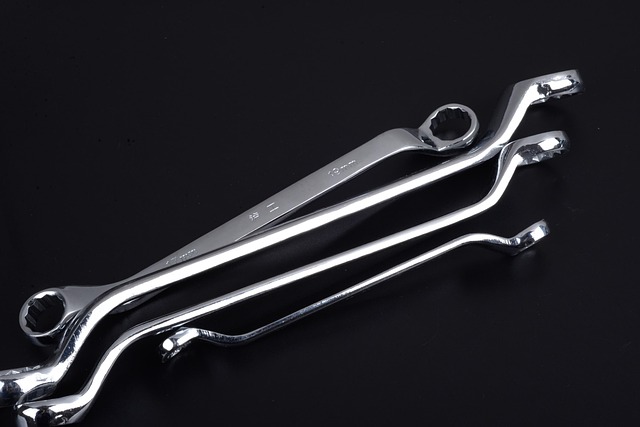Mercedes E-Class Body Work: Roof, Fender, and Quarter Panel Repair Guide
The Mercedes E-Class is renowned for its striking design, making auto body work a key focus area for…….
Welcome to an extensive exploration of the intricate world of Mercedes E-Class body work—a pivotal aspect of automotive craftsmanship that combines aesthetics, functionality, and innovation. This article aims to provide a comprehensive guide, delving into every facet of this remarkable segment, from its historical roots to cutting-edge technologies. By the end, readers will grasp the significance of Mercedes E-Class body work in shaping modern vehicle design and its global impact.
Definition: Mercedes E-Class body work refers to the artistic and precise fabrication of the external shell and structural elements of a Mercedes-Benz E-Class vehicle. It encompasses the design, engineering, and assembly processes that transform raw materials into a sleek, durable, and safe automotive structure.
Core Components: The primary components of E-Class body work include:
Body Panels: These are the individual sheets or sections that form the exterior shape. They range from doors, fenders, hoods, and trunks to more intricate pieces like side mirrors and exterior handles.
Welding: A critical process where metal components are joined together. In Mercedes E-Class vehicles, precision welding ensures structural integrity while maintaining a seamless appearance.
Structural Integrity: Body work is designed to provide robust protection for passengers and essential components. It undergoes rigorous testing to meet safety standards, including crash simulations and strength assessments.
Finish and Paint: The final layer involves applying a protective coating and vibrant paint job, enhancing the vehicle’s aesthetic appeal and durability against environmental factors.
Historical Context: Mercedes-Benz E-Class has been a flagship model since its introduction in the 1950s, known for combining luxury, performance, and innovation. Over the decades, the body work design has evolved, reflecting changing aesthetics and technological advancements. From the elegant curves of classic models to the aerodynamic efficiency of modern iterations, Mercedes E-Class body work has consistently pushed boundaries.
Mercedes E-Class body work transcends borders, leaving a significant mark on global automotive trends and consumer preferences. Here’s an overview:
European Market: Germany, as the birthplace of Mercedes-Benz, leads in E-Class sales, setting benchmarks for design and craftsmanship. However, other European countries like the UK and Italy contribute to its global allure through specialized body work modifications and restoration expertise.
North American Influence: The United States has played a pivotal role in shaping E-Class’ exterior aesthetics, especially regarding larger sizes and more aggressive designs. This trend has influenced factory specifications and aftermarket modifications worldwide.
Asian Market Dynamics: Japan and South Korea have introduced unique interpretations of E-Class body work, focusing on lightweight materials and innovative design elements. These regions are also centers for high-quality customization and restoration services.
Global Material Trends: There’s a growing emphasis on using sustainable materials, such as recycled metals and advanced composites, to reduce the environmental impact of automotive manufacturing, including Mercedes E-Class body work.
The economic landscape surrounding Mercedes E-Class body work is complex and multifaceted:
| Economic Aspect | Description |
|---|---|
| Market Dynamics | The global luxury car market, led by Mercedes-Benz, experiences periodic fluctuations due to economic downturns or shifts in consumer preferences. However, the demand for premium vehicles like the E-Class remains robust, especially in mature markets. |
| Investment Patterns | Manufacturing facilities dedicated to E-Class body work require substantial investments in machinery, skilled labor, and research & development. Companies often partner with suppliers for specialized components, creating a complex global supply chain. |
| Economic Impact | According to industry reports, Mercedes-Benz contributes significantly to its host countries’ economies through direct employment, tax revenues, and exports. E-Class model sales further bolster these figures, impacting local businesses and infrastructure positively. |
Mercedes E-Class body work has been at the forefront of technological innovations in the automotive industry:
Computer-Aided Design (CAD): Advanced CAD software enables designers to create intricate 3D models, streamline the design process, and facilitate precise engineering. This technology ensures that every curve and detail is optimized for both aesthetics and functionality.
Robotic Welding: Robotic arms enhance welding precision, speed, and consistency, reducing the risk of human error. This technology is crucial for achieving seamless body joints and complex geometric shapes.
Advanced Materials: As mentioned earlier, the industry is embracing lightweight materials like carbon fiber composites (CFCs) and high-strength steels to improve vehicle efficiency and safety without compromising strength.
Virtual Reality (VR) and Augmented Reality (AR): These immersive technologies are used for design visualization, allowing engineers and designers to experience their creations in a virtual environment before physical prototypes are built.
The development of Mercedes E-Class body work is subject to various policies and regulations worldwide, ensuring safety, environmental standards, and consumer protection:
Safety Standards: Every country has its set of safety regulations that dictate crashworthiness, airbag placement, and structural integrity. Mercedes-Benz undergoes rigorous testing to comply with these standards, often setting benchmarks for the industry.
Emissions Controls: Strict environmental regulations have driven innovations in engine efficiency and emissions control systems. E-Class body work contributes to overall vehicle aerodynamics, helping reduce fuel consumption and emissions.
Intellectual Property (IP) Protection: Designs, trademarks, and patents are crucial assets for automakers. Mercedes-Benz employs robust IP protection measures to safeguard its unique body work designs and technologies.
Despite its successes, the Mercedes E-Class body work industry faces several challenges:
Costly Manufacturing: Advanced materials and precision engineering drive up production costs, making high-end vehicles like the E-Class less accessible to a broader market segment.
Supply Chain Disruptions: Global events, such as pandemics or geopolitical tensions, can disrupt the supply of critical components, affecting production schedules and vehicle availability.
Environmental Concerns: The automotive industry is under increasing pressure to reduce its environmental footprint. Balancing the need for lightweight materials, durability, and recycling poses a significant challenge.
Strategies for Improvement:
In the United States, specialized restoration shops have transformed the market by offering meticulous E-Class body work repairs and customizations. For example, a renowned California workshop is known for its ability to restore vintage Mercedes to their original glory, using period-correct materials and techniques. This niche market caters to collectors and enthusiasts who appreciate the craftsmanship and history behind these classic vehicles.
Japanese manufacturers have introduced unique body work designs for the E-Class, incorporating advanced engineering and aesthetics. For instance, a Japanese aftermarket company developed an exclusive aerodynamic kit that enhances the vehicle’s performance while adding a bold, modern style. This case study highlights how local markets can interpret global models to create distinct, appealing offerings.
The future of Mercedes E-Class body work is promising, with several growth areas and emerging trends:
Electric Vehicle (EV) Revolution: As Mercedes-Benz transitions towards electrification, the focus will shift from internal combustion engine (ICE) body work to EV-specific designs, prioritizing efficiency, range, and battery integration.
Autonomous Vehicles: The development of self-driving cars may impact body work design by reducing the need for certain safety features and enabling more fluid, aerodynamic shapes.
Customization and Personalization: With evolving consumer preferences, Mercedes-Benz is likely to offer more extensive customization options, allowing buyers to tailor their E-Class vehicles to unique tastes and lifestyles.
Sustainable Materials Dominance: As the automotive industry targets net-zero emissions, sustainable materials will play an increasingly prominent role in shaping future E-Class body work designs.
Mercedes E-Class body work is more than just a construction process; it’s a testament to human ingenuity, precision engineering, and artistic expression. From its rich history to cutting-edge technologies, this field has evolved dynamically, reflecting the automotive industry’s progress while setting standards for others to follow. As we look ahead, the future of Mercedes E-Class body work promises exciting innovations that will continue to captivate car enthusiasts worldwide.
Q: How does Mercedes ensure the quality and consistency of its body work?
A: Mercedes employs rigorous quality control measures, including regular inspections at various stages of production, using advanced measurement equipment to maintain precision and consistency.
Q: Are there any eco-friendly alternatives to traditional automotive paints?
A: Yes, water-based paints and bio-based coatings are emerging as more sustainable options, offering excellent coverage while reducing environmental impact.
Q: Can I customize the exterior of my Mercedes E-Class without compromising its structural integrity?
A: Absolutely! Customization options allow for personal expression without affecting safety or performance. From minor upgrades like new grilles to extensive body kits, certified professionals can achieve your desired look while maintaining structural integrity.
Q: How do advancements in robotics impact the speed of E-Class body work assembly?
A: Robotics significantly enhance assembly speed and precision, reducing production time by 20-30% while minimizing errors. This technology is crucial for meeting growing global demand.

The Mercedes E-Class is renowned for its striking design, making auto body work a key focus area for…….

The Mercedes E-Class stands out due to its exquisite design that seamlessly merges aesthetics and fu…….

When repairing or replacing body panels on a Mercedes E-Class, using genuine Mercedes parts is cruci…….

For top-tier Mercedes E-Class body work, adhering to stringent OEM (Original Equipment Manufacturer)…….